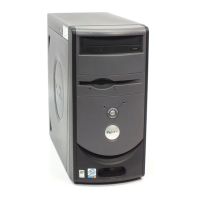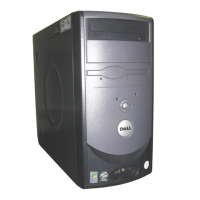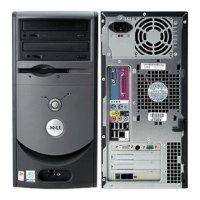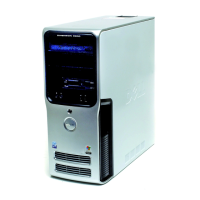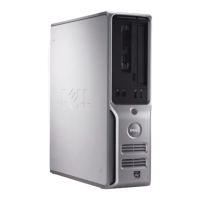Setting Up and Using Your Computer 31
Hibernate Tab
The Hibernate tab allows you to enable hibernate mode. If you want to use the hibernate settings you
defined on the Power Schemes tab, click the Enable hibernate support check box on the Hibernate tab.
For more information on power management options:
1
Click the
Start
button and click
Help and Support
.
2
In the
Help and Support
window, click
Performance and maintenance
.
3
In the
Performance and maintenance
window, click
Conserving power on your computer
.
Enabling Cool ’n’ Quiet™ Technology
Cool ’n’ Quiet technology controls your computer’s processor performance automatically, dynamically
adjusting the operating frequency and voltage, according to the task at hand. When an application does
not require full performance, significant amounts of power can be saved. Performance is designed to still
be responsive, with maximum processor performance being delivered when required, and automatic
power savings when possible.
1
Run the system setup program and enable Cool ’n’ Quiet technology using the Power Management
options (see "System Setup" on page 115).
2
Click on the
Start
→
Settings
→
Control Panel
→
Power Options
to access the
Power Options
Properties
window.
3
From the
Power Schemes
tab, click the Power Schemes drop-down menu and select
Minimal Power
Management
and then click
OK
.
About RAID Configurations
This section provides an overview of the RAID configuration you may have selected when you purchased
your computer. Your computer supports RAID level 1. A RAID level 1 is recommended for users that
desire a high level of data integrity.
The drives in a RAID configuration should be the same size in order to ensure that the larger drive does
not contain unallocated (and therefore unusable) space.
RAID Level 1 Configuration
RAID level 1 uses a data-redundancy storage technique known as mirroring to enhance data integrity.
When data is written to the primary drive, the data is also duplicated, or mirrored, on the second drive in
the configuration. A RAID level 1 configuration sacrifices high data-access rates for its data redundancy
advantages.
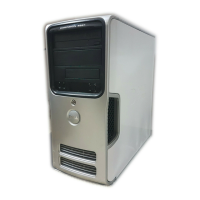
